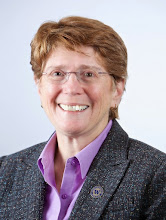[RESEARCH] A study of voir dire in one Midwestern county explores attorneys' practices, attitudes, and experience. Marvin Zalman & Olga Tsoudis, Plucking Weeds from the Garden: Lawyers Speak about Voir Dire, 51 Wayne L. Rev. 163-448 (2005), Find Result - 51 WAYNLR 163.
The researchers created a sample of 46 jury trials -- 22 criminal, 24 civil -- in the county (which is unnamed, to preserve the anonymity of attorneys and judges). They then conducted 60-90 minute interviews with attorneys in the cases, interviewing 79 attorneys in all. Their questionnaire covered topics such as the perceived purpose of voir dire, preparation for voir dire, how the attorneys decide whom to strike, whether peremptory strikes should be retained, whether the attorneys had experience with Batson challenges. Attorneys also took a written survey to measure general attitudes (such as "liberal" and "conservative").
Excerpts from the article's Conclusion (pp. 382-89):
- "Most respondents agreed that gaining rapport and 'educating a jury on your case theory' were goals they sought to achieve during voir dire."
- "On the whole, the respondents had modest views of their ability to predict the decisions of jurors."
- "For the most part, preparation for voir dire was a byproduct of preparation for the trial, and not a distinct phase of preparation that required unique efforts."
- "One important aspect of preparation was knowing the judge's reputation for the extent of latitude allowed to attorneys on voir dire and knowing any special rules they might impose on the jury selection process."
- "During voir dire, attorneys found it useful to have either another attorney, a paralegal, or a client observe the jury to provide information on the body language of jurors and to assist in other ways."
- "On the whole, voir dire was not excessively time consuming." Mean estimates from respondents were: 1 hr. 53 min. (crim defense attys); 2 hr. 29 min. (prosecutors), 1 hr. 45 min. (civil attys).
- "To explore the reliance on stereotypes, we asked whether jury panels appeared to reflect a cross-section of Midwest County residents. 'Liberal,' or civil plaintiffs' and criminal defense attorneys, tended to answer 'no' while 'conservative,' or civil defendants' attorneys and prosecutors, tended to answer 'yes.'"
- "All respondents felt that the peremptory challenge should not be eliminated."
Categories: empirical-studies, voir-dire, surveys,

No comments:
Post a Comment